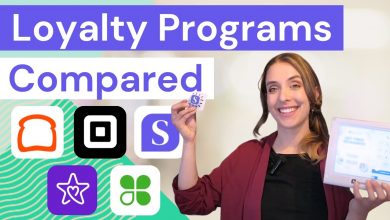How Can Gamification Be Used In App Design?
Gamification involves applying game mechanics—such as points, badges, leaderboards, challenges, and progress tracking—to encourage desired user behaviors.
 Gamification, the process of incorporating game-like elements into non-game contexts, has become a powerful strategy for enhancing user engagement, retention, and satisfaction in app design.
Gamification, the process of incorporating game-like elements into non-game contexts, has become a powerful strategy for enhancing user engagement, retention, and satisfaction in app design.
By leveraging psychological principles such as reward-seeking behavior, competition, and achievement, gamification transforms mundane tasks into compelling experiences.
This article explores how gamification can be effectively integrated into app design, its benefits, best practices, and real-world examples, providing actionable insights for developers and designers.
Understanding Gamification in App Design
Gamification involves applying game mechanics—such as points, badges, leaderboards, challenges, and progress tracking—to encourage desired user behaviors. In app design, the goal is to make interactions more enjoyable, increase user motivation, and foster long-term engagement.
Gamification taps into intrinsic and extrinsic motivators, such as the desire for mastery, social recognition, or tangible rewards, to create a more immersive user experience.
Gamification is rooted in behavioral psychology. According to self-determination theory, humans are motivated by autonomy, competence, and relatedness. Gamification addresses these needs by:
- Autonomy: Allowing users to make choices, such as customizing their experience or selecting challenges.
- Competence: Providing opportunities to achieve goals, track progress, and earn rewards.
- Relatedness: Encouraging social interaction through leaderboards, team challenges, or sharing achievements.
Additionally, gamification triggers dopamine release in the brain, creating a sense of pleasure and reinforcing user actions. This makes it particularly effective for apps aiming to build habits, drive engagement, or promote learning.
Key Gamification Elements for App Design
To successfully implement gamification, app designers must select mechanics that align with the app’s purpose and target audience.
- Points Systems – Points are a versatile way to reward users for completing actions, such as logging in, completing tasks, or sharing content. They provide immediate feedback and a sense of progress. Example: Duolingo awards points for completing language lessons, motivating users to maintain daily streaks.
- Badges and Achievements: Badges recognize specific milestones or accomplishments, appealing to users’ desire for recognition and mastery. Example: Fitness apps like Fitbit award badges for hitting step goals or completing challenges, encouraging continued use.
- Leaderboards: Leaderboards foster competition by ranking users based on their performance. They work best in social or community-driven apps but should be used carefully to avoid discouraging less competitive users. Example: Strava’s leaderboards rank users’ running or cycling performance, inspiring friendly competition.
- Progress Bars and Levels: Progress bars visualize a user’s journey toward a goal, while leveling systems reward sustained engagement with increased status or privileges. Example: LinkedIn’s profile completion bar encourages users to add more details to reach “All-Star” status.
- Challenges and Quests: Challenges or quests provide users with specific, time-bound tasks that make routine activities feel like adventures. Example: Habitica turns daily tasks into RPG-style quests, where users level up characters by completing real-world goals.
- Social Features: Incorporating social elements, such as sharing achievements or collaborating on challenges, enhances relatedness and community engagement. Example: Nike Run Club allows users to share runs and compete with friends, fostering a sense of camaraderie.
- Rewards and Incentives: Tangible or virtual rewards, such as discounts, premium features, or in-app currency, incentivize continued interaction. Example: Starbucks’ Rewards app offers stars for purchases, redeemable for free drinks, driving customer loyalty.
Conclusion
Gamification is a transformative tool in app design, driving engagement, retention, and user satisfaction when executed thoughtfully. By aligning game mechanics with app goals, understanding user motivations, and following ethical design principles, developers can create compelling experiences that keep users coming back.
As technology advances, the potential for innovative gamification strategies will only grow, offering exciting opportunities to redefine how users interact with apps.
By incorporating elements like points, badges, and social features, and learning from successful examples like Duolingo and Starbucks, designers can craft apps that not only serve a purpose but also delight and inspire their users. Gamification isn’t just about play—it’s about creating meaningful connections between users and the digital experiences they love.




